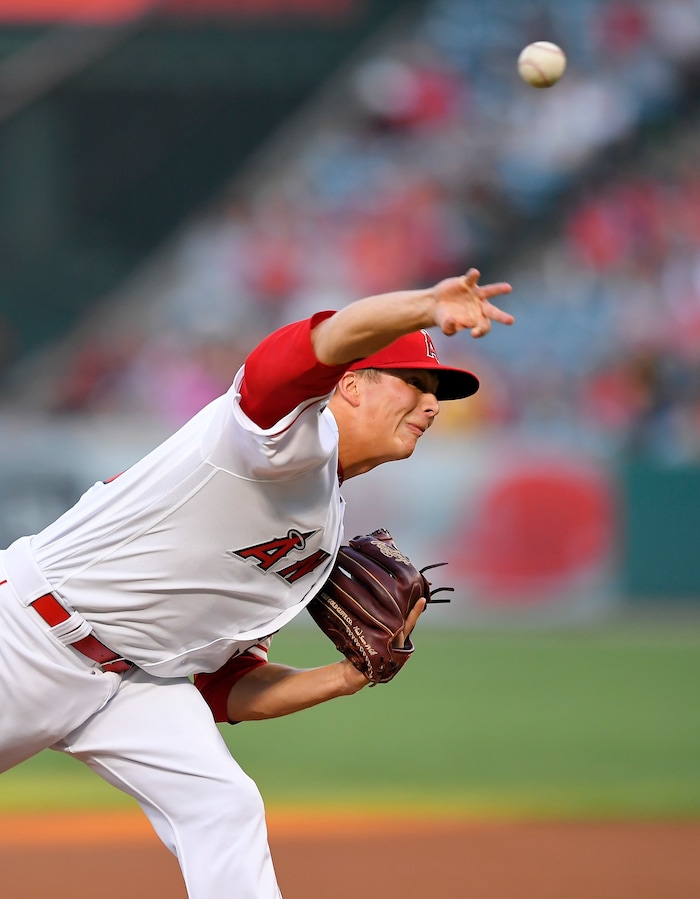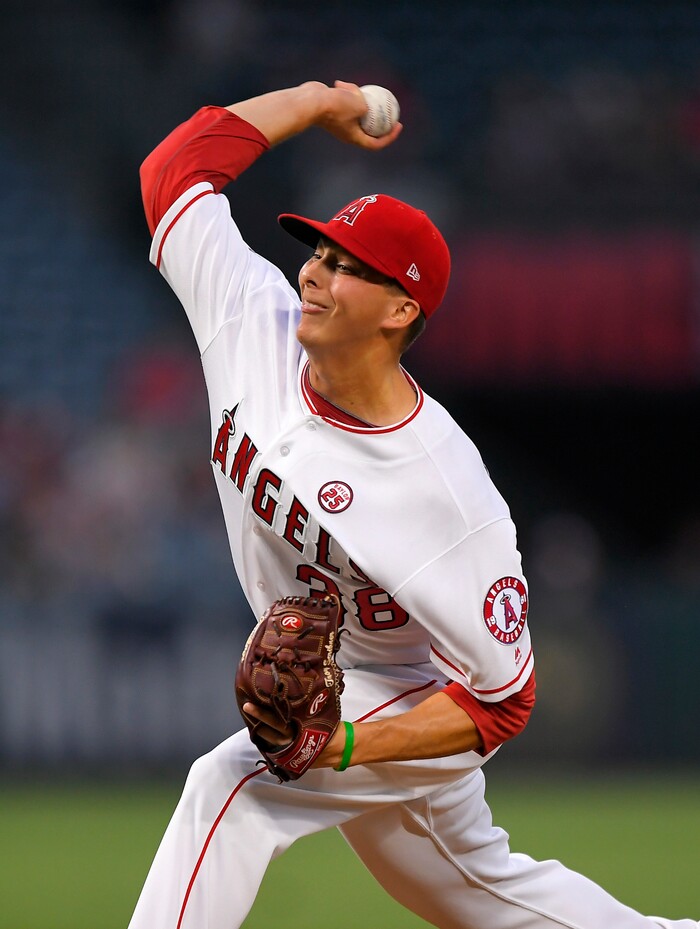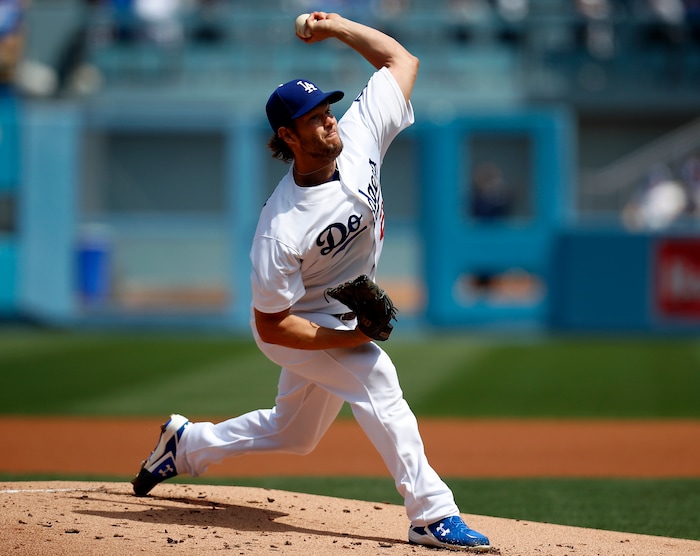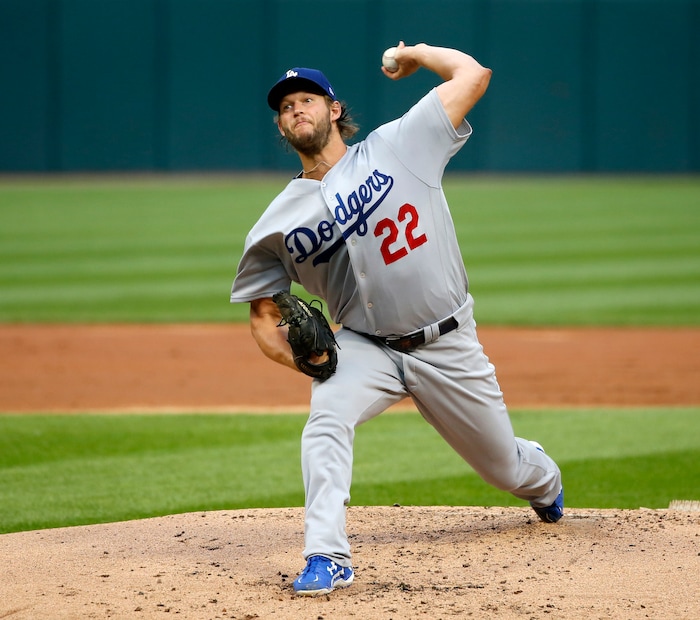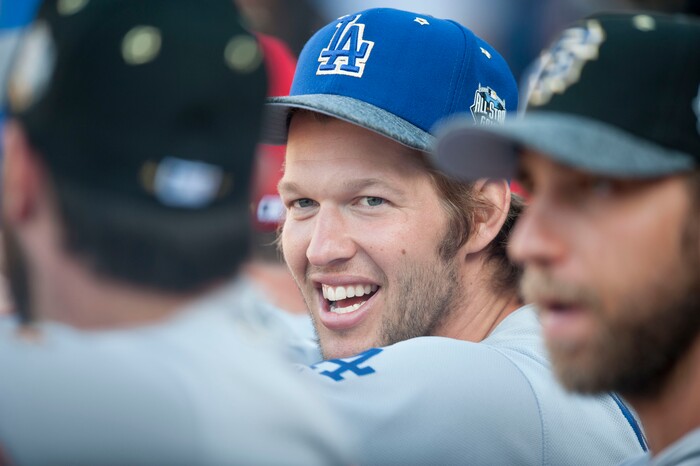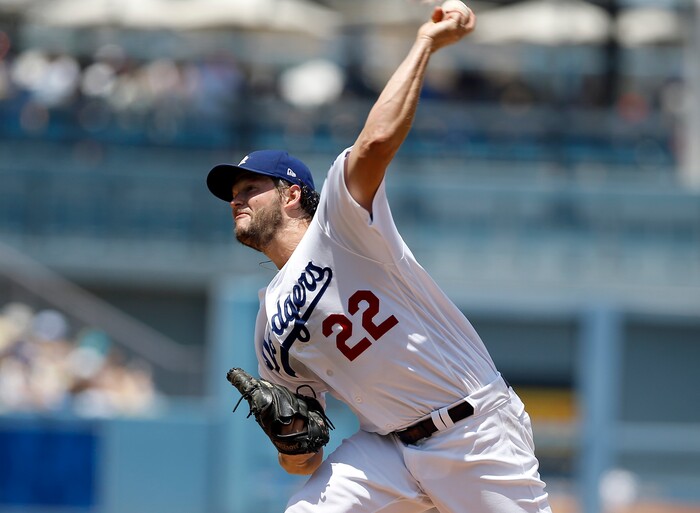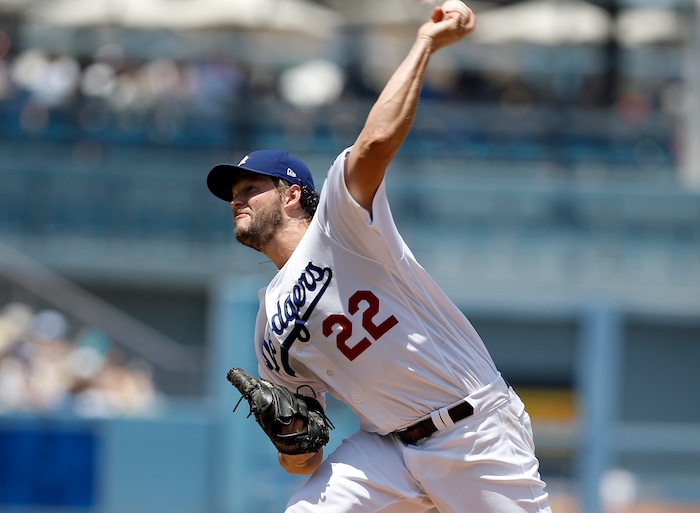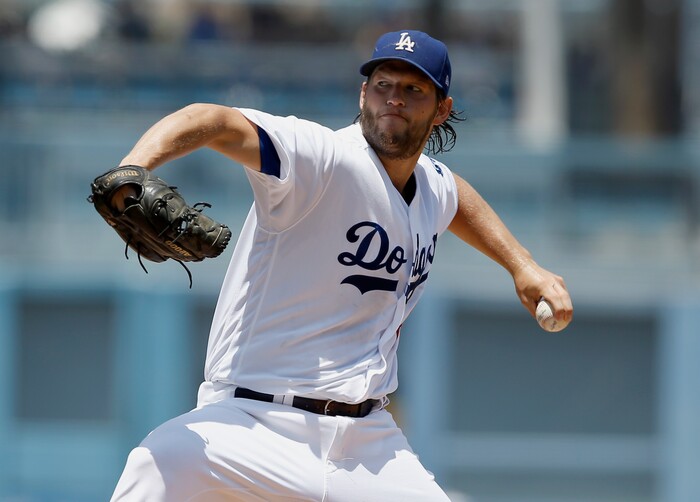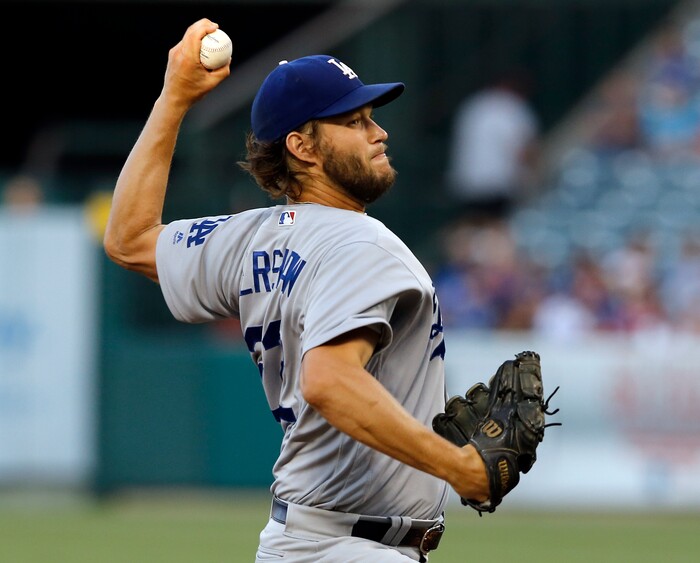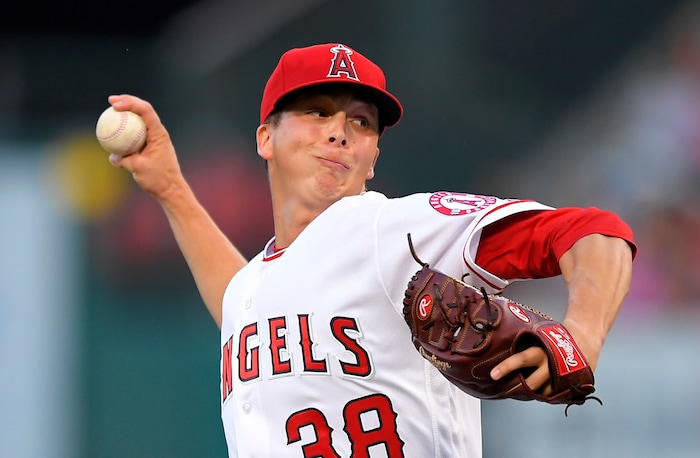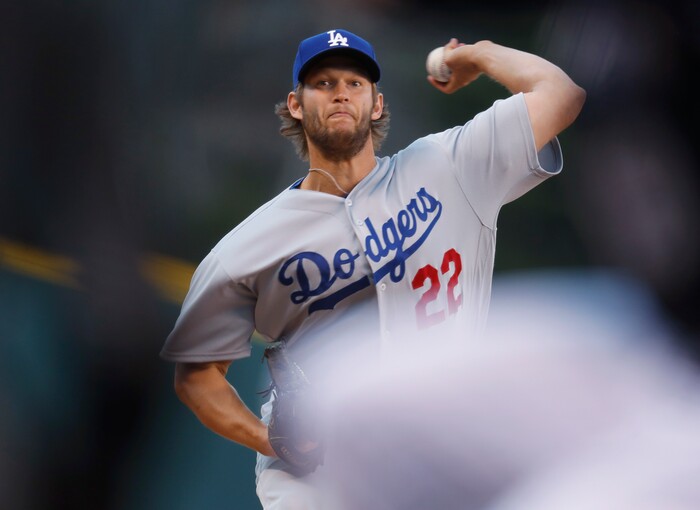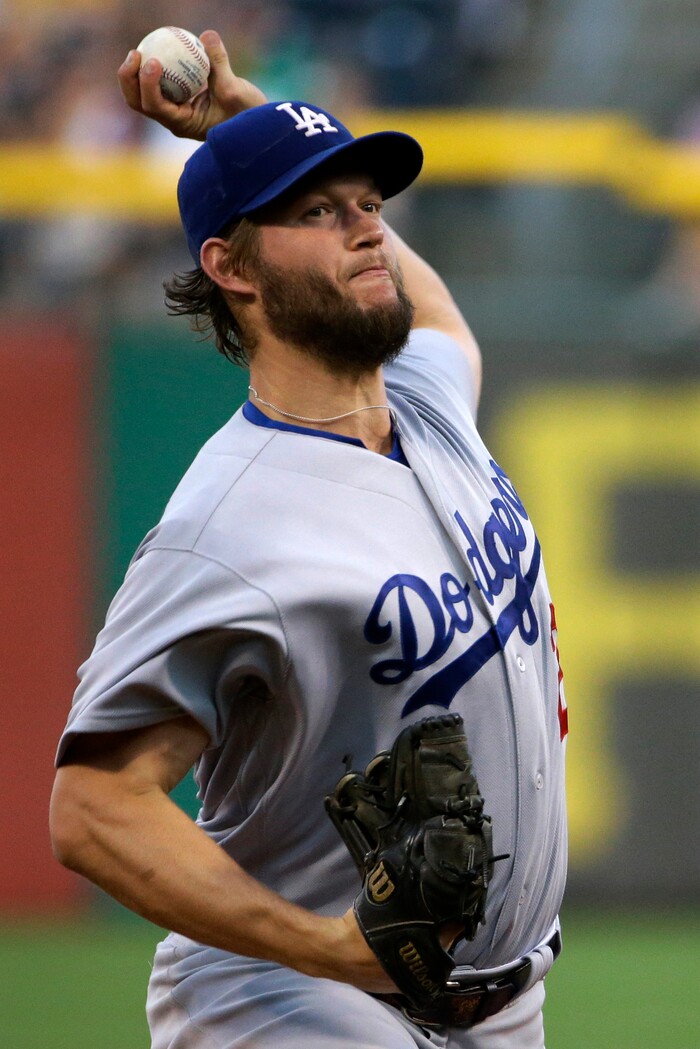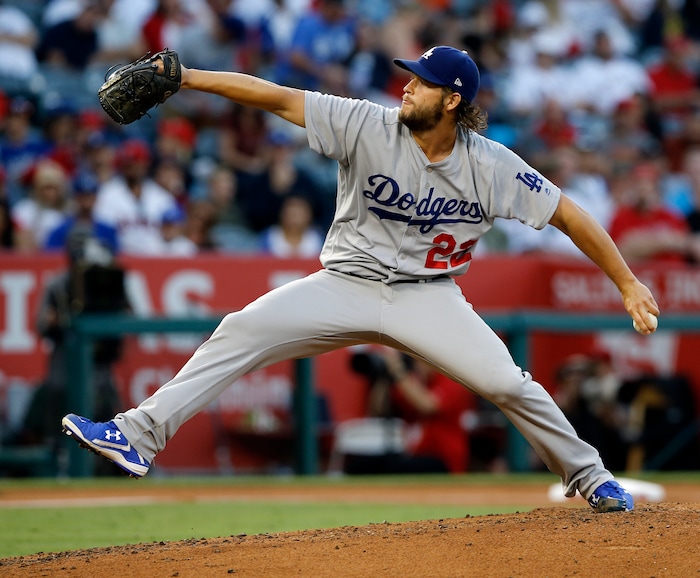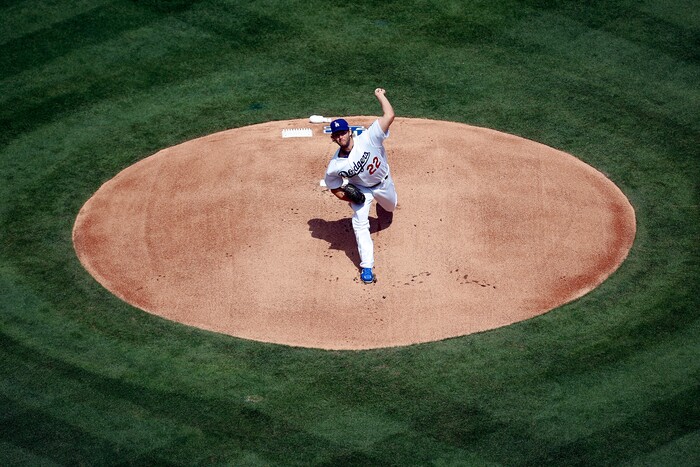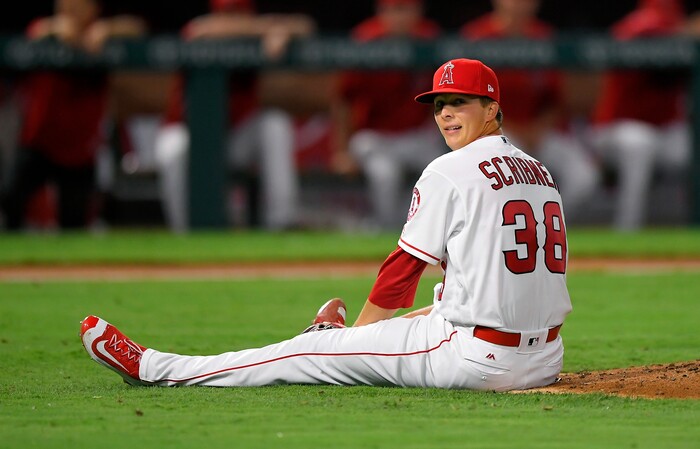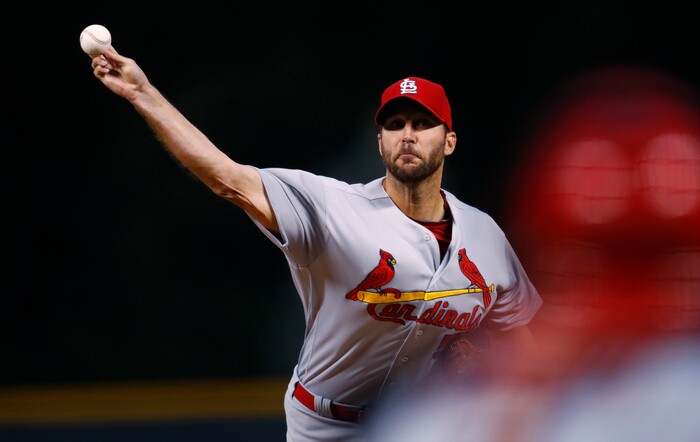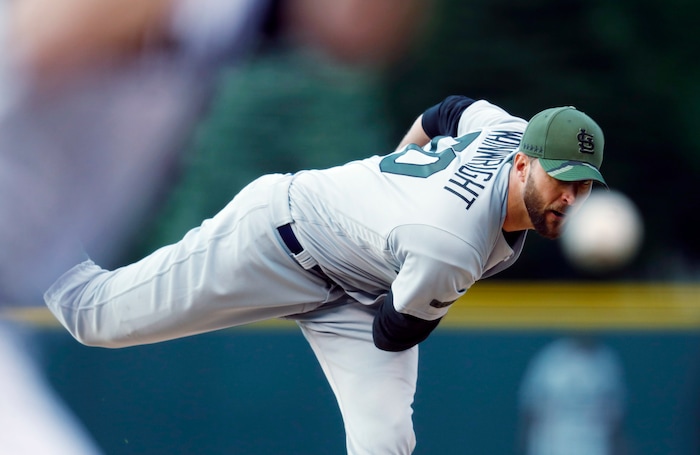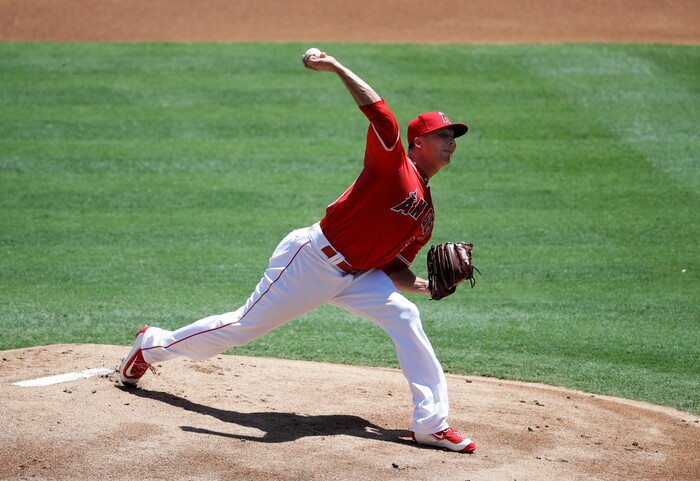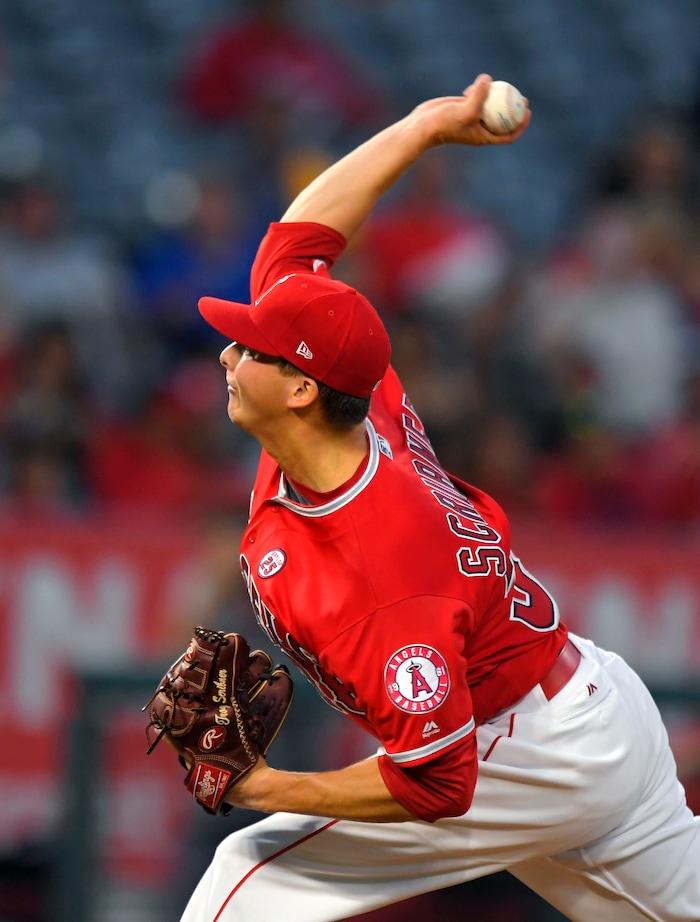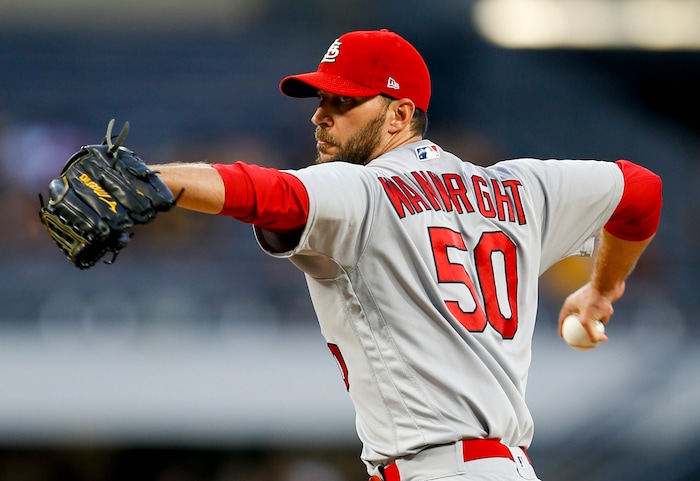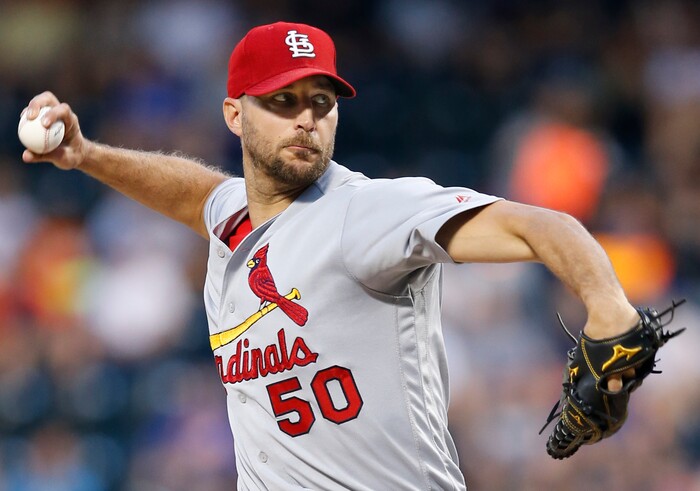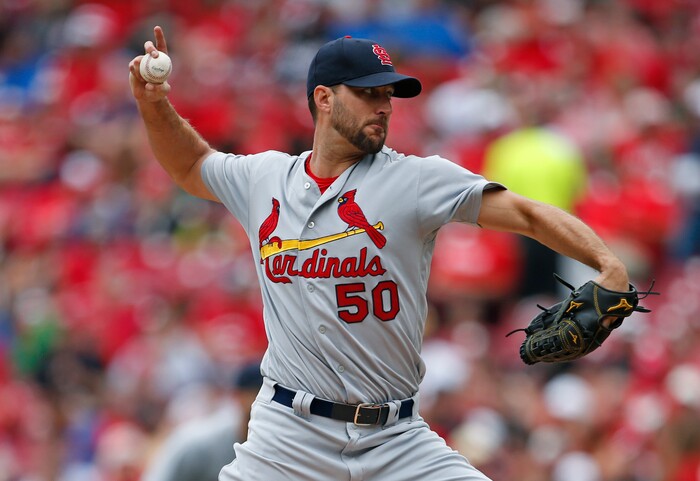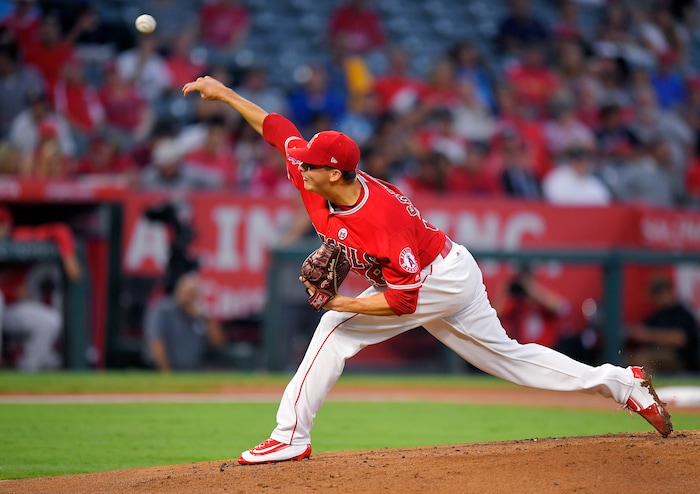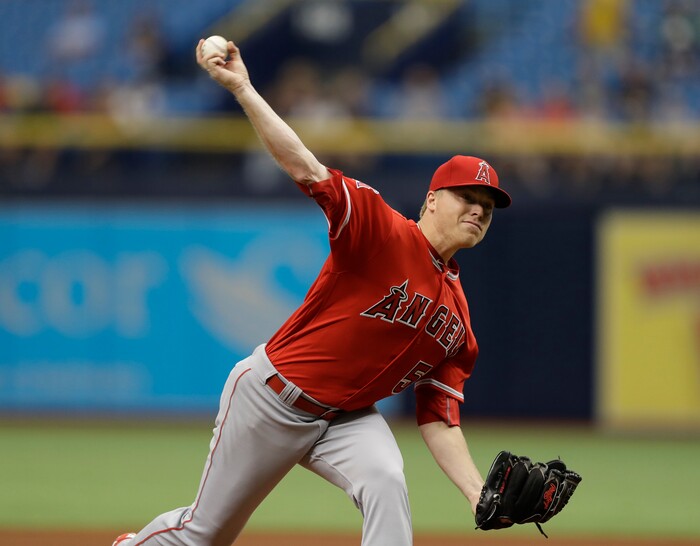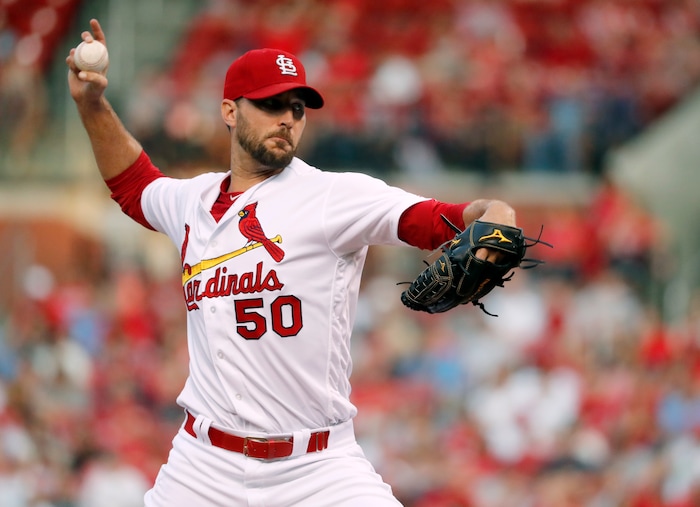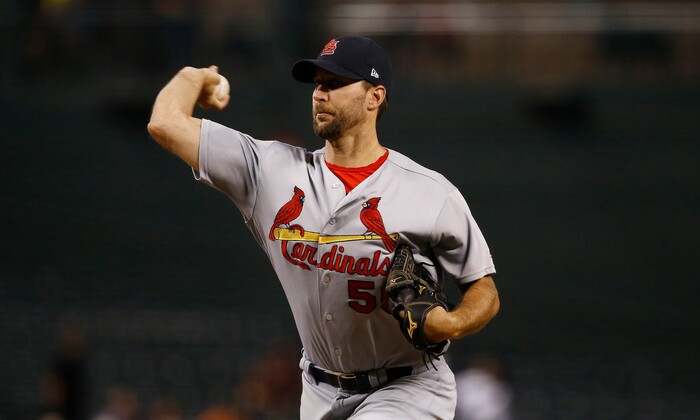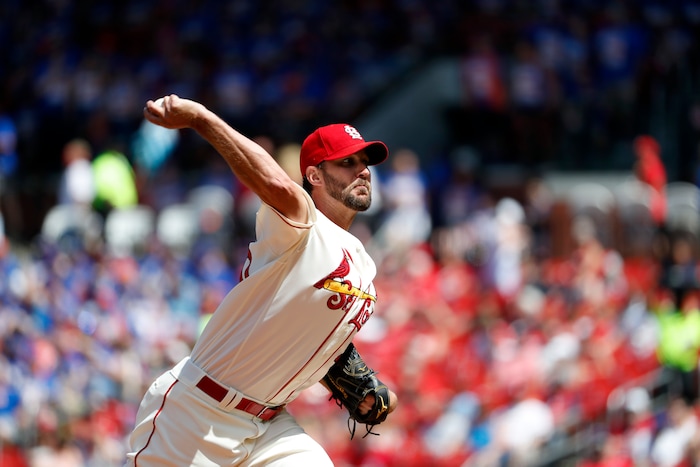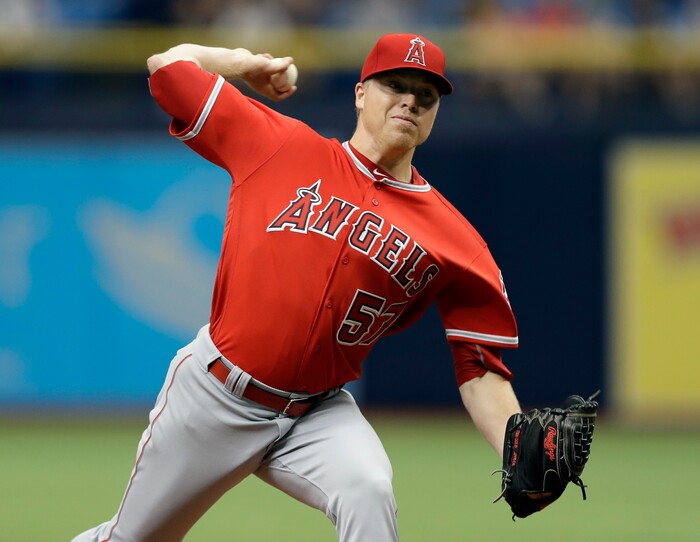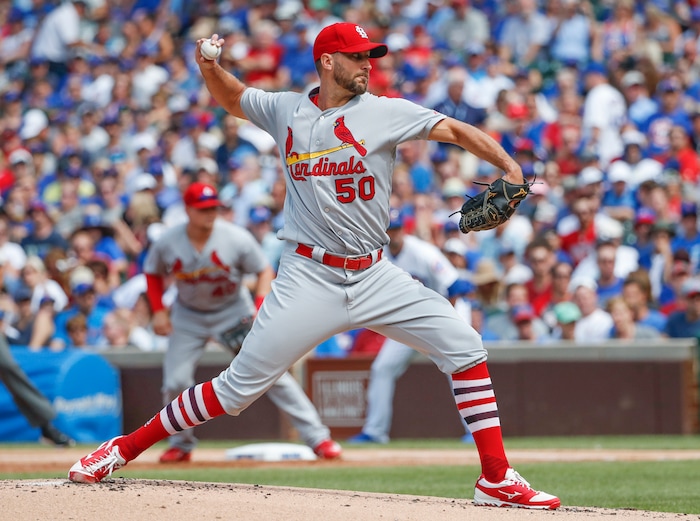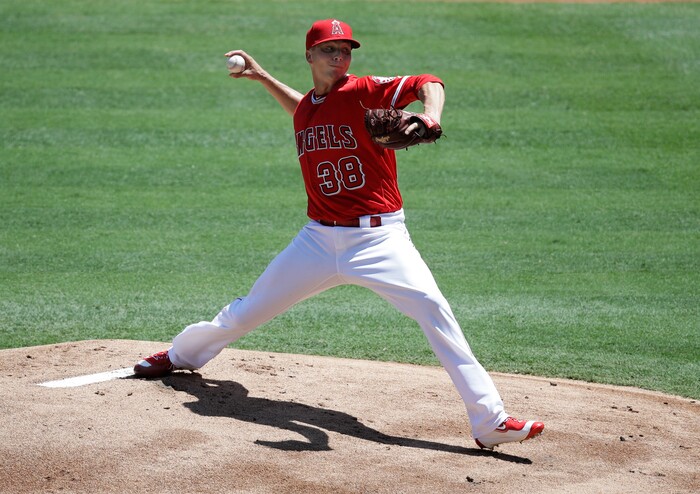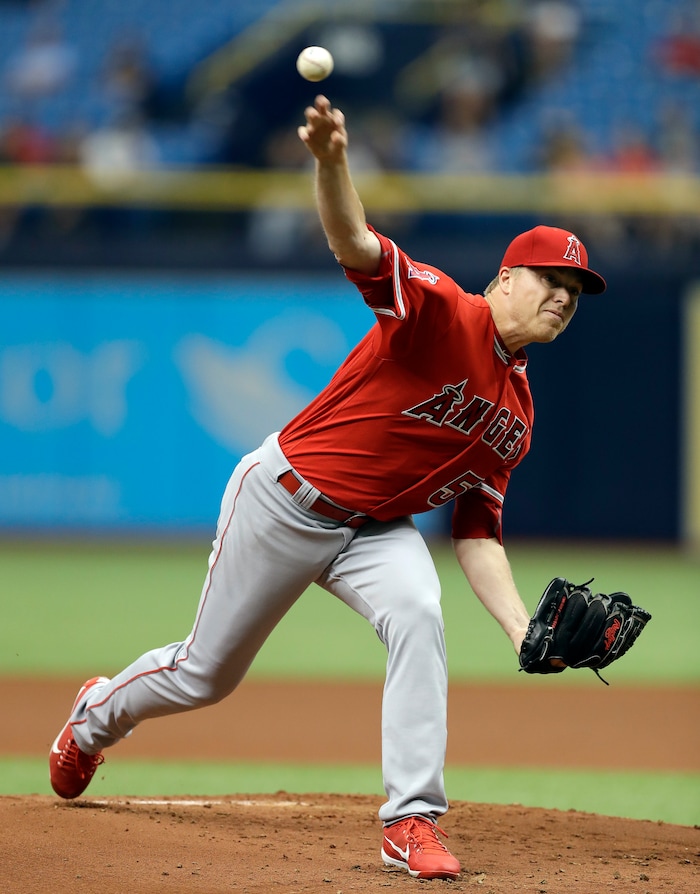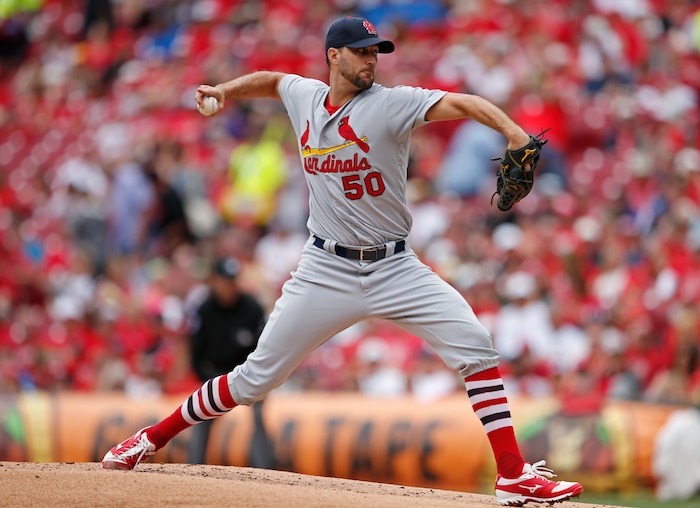Batting gloves or helmet?
Troy Scribner, the Bees All-Star turned Los Angeles Angels right-hander, already knows where he’s aiming because he knows where he is.
He bends slightly at the waist as he pulls up his glove to cover his mouth. He watches his catcher, who calls for a curveball. Scribner doesn’t even acknowledge the sign with a nod, he just starts his herky-jerky motion. His left leg kicks high into the air as he leans back and contorts his elbow then snaps his wrist as he delivers toward the plate.
But where is he aiming with that curveball? Is it at the batter’s head or hands?
It all depends where Scribner is pitching.
If it’s a start in Salt Lake, Colorado Springs or any of the other high-elevation cities in the Pacific Coast League, he’s aiming for the hands.
If it’s Los Angeles, Boston, New Orleans or any other park near sea level, he’s pointing his curveball at the batter’s head.
That’s the difference elevation makes in the break on a curveball. University of Illinois professor emeritus of physics Alan Nathan says there’s an 18-percent difference in the movement on a curveball thrown at Denver’s Coors Field compared to one thrown at a sea-level venue like Angel Stadium or Yankee Stadium. And that 18-percent decrease can mean the difference between a batter swinging in vain as the ball darts toward the ground or a hanging pitch ripe to be hammered.
“When I first got here, it definitely was frustrating because I depend a lot on my breaking ball, a lot on my offspeed pitches,” Scribner said earlier this season while still pitching for the Bees. “It’s just a learning curve.”
What’s going on here?
The reason for the decreased movement comes down to air density. The greater the air density, the greater the movement. And air density decreases as elevation increases.
A pitcher snaps his wrist toward the plate when releasing a curveball, which creates topspin. That topspin generates a downward force — the Mangus effect — which helps cause it to drop.
The elevation decreases the air density, which decreases the Mangus effect pushing down the ball. Hence less vertical movement.
The technology available to track the movement of pitches in Major League Baseball makes the scientific theory more easily digestible. Take the Cardinals’ Adam Wainwright and Dodgers’ Clayton Kershaw, two pitchers with the best curveballs in the game.
Kershaw, a three-time Cy Young winner, regularly pitches at Denver’s Coors Field since his Dodgers are in the NL West. In every one of his 11 seasons in the big leagues, the ballpark where he sees the least vertical movement on his curveball is Coors Field, according to Pitch Info data found at BrooksBaseball.net. And sometimes it’s less than half what it is at a different park.
Take back-to-back starts he made in May. He threw 19 curveballs May 6 at Petco Park in San Diego, and the average vertical movement on those pitches was 12.02 inches. His next start came May 12 at Coors Field, where he threw 11 curves with an average vertical break of 5.92 inches.
Wainwright, a three-time MLB All-Star, experienced similar results. His 32 curveballs May 27 at Coors Field averaged a 5.49-inch drop, while his 29 in his next outing, June 1 in St. Louis, averaged 8.67 inches.
Why does it matter?
The curveballs Wainwright and Kershaw deliver at elevation still are among the best thrown at Coors Field, but the disparity in drop isn’t as great. That dramatic bend as it dips into the strike zone and buckle’s a batter’s knees isn’t as pronounced. And that can be distressing.
“Every time you hang one and it gets hit in the gap or over the fence, it gets frustrating,” said Bees pitcher Daniel Wright, who has spent time with the Reds and Angels.
“It’s tough to pitch at altitude for sure,” said Andrew Bailey, a two-time MLB All-Star with Oakland.
Playing at higher elevation is nothing new for Eric Young Jr. He’s called parks in Denver, Colorado Springs and Salt Lake home, so he’s a bit of an expert and tries to capitalize on that discomfort for pitchers.
“Usually most pitchers get to altitude, they already psyched themselves out before they even step on the mound,” he said. “Knowing that, they’re probably going to hang a pitch just because they already mentally are at a disadvantage, thinking their ball’s not going to move the same at altitude.”
It’s that hanging breaking ball that’s nirvana for the hitter. It’s ripe to be hit a long way, and since the ball travels further at elevation — it’s the reduced air density again benefiting the hitter — bad things happen to the pitcher.
Sticking with it
Let’s go back to those two outings by Kershaw in May. He won both games. The left-hander allowed one earned run over 7.1 innings against the Padres and two earned runs over seven innings against the Rockies.
Those results serve a good example to back up what Bees manager Keith Johnson, who is charged with helping to evaluate and develop players at the Triple-A level, preaches.
“It’s like, ‘This is my pitch. This is what I do to throw that pitch,’” Johnson said. “… Because if you start doing one thing here and one thing here and one thing there, the one thing that a pitcher needs you’re going to lose, which is consistency.”
And the way to find consistency is repetition. Scribner learned that early in his tenure with the Bees. Shying away from throwing the curveball isn’t the answer.
“You just have to use it differently,” he said. “You gotta know that if it’s not breaking as much, it’s not gonna miss as many bats. It’s going to hit more bats. It doesn’t mean you don’t have to use it.”
Astros catcher Brian McCann, a seven-time MLB All-Star, says the decrease in movement definitely hurts the pitcher, so he takes that into account when calling pitches behind the plate.
“It doesn’t have that sharp bite, doesn’t have that tilt that you usually get on your slider or your curveball is not there,” he said. “I think that’s why you’re seeing teams go to the fastball/changeup. That plays into your game plan a little bit.”
Catcher Tony Sanchez tries to be patient with Bees pitchers because he, too, understands consistency with a pitch is crucial. But the Bees are in the middle of a pennant race, so his patience with lack of movement on breaking pitches at elevation knew limits before he was traded to the Braves on Thursday.
“I try not to let it influence my pitch calling, but the truth is, if I have a guy who can’t execute a pitch or his slider isn’t doing what it needs to be doing, I’m not going to throw that pitch to a guy who can make us pay for a mistake,” he said. “I take it into account. I don’t let it completely influence my game plan, but it’s definitely in the back of my mind.”
Helping the pitcher
Nathan, the baseball physicist, wanted to make clear that it isn’t all bad news for pitchers at a higher elevation. That lower air density benefits pitches thrown with a lot of backspin because they will see added vertical movement.
“This whole thing about sinkerballs and split-finger fastball being more effective in Denver is a point I think is worth emphasizing,” he said. “… Because the split-finger fastball is thrown with backspin — it is just simply reduced backspin — so it’s the reduced backspin that makes it drop more.”
The difference in movement at elevation isn’t as pronounced on sinkers and split-finger pitches as with the curve, according to Pitch Info data. Rockies starter Kyle Freeland has averaged 3.72 inches of vertical movement on his sinker during his 28 outings where he’s used the pitch this season, according to Pitch Info. The four outings where he averaged more than 5 inches of movement all came at Coors Field, which helps show some advantage.
“Honestly the balls you see the biggest difference on is sinkers,” said catcher Tom Murphy, one of the Rockies’ top prospects. “If a guy doesn’t stay behind it, who knows what that pitch is going to do.”
This is where a pitcher could lose the consistency stressed by the Bees manager. A pitcher is asking for trouble when he throws different pitches based on elevation.
“You’ve got to stick to your strengths,” Bailey said. “You’ve got to trust your stuff.”
Because at the end of the day, that’s what’s going to get the best results for a pitcher. He can’t hide from the effects of elevation, plus those evaluating players understand the challenges.
“Differing environments certainly add a level of complexity to that evaluation process,” Angels assistant general manager Jonathan Strangio said. “… There are certainly environments, including Salt Lake, that are more hitter friendly for sure. You know the effect exists and you account for it, whether that’s on the statistics and analytics side trying to account for some of those effects.”
It’s not impossible to succeed under those conditions. Scribner embraced the challenge, even earning a spot in the Triple-A All-Star Game. He was promoted to the Angels on Aug. 24.
“Anywhere else we go, it’s going to be better,” he said. “It’s more of a confidence thing and just knowing you can handle anything.”
